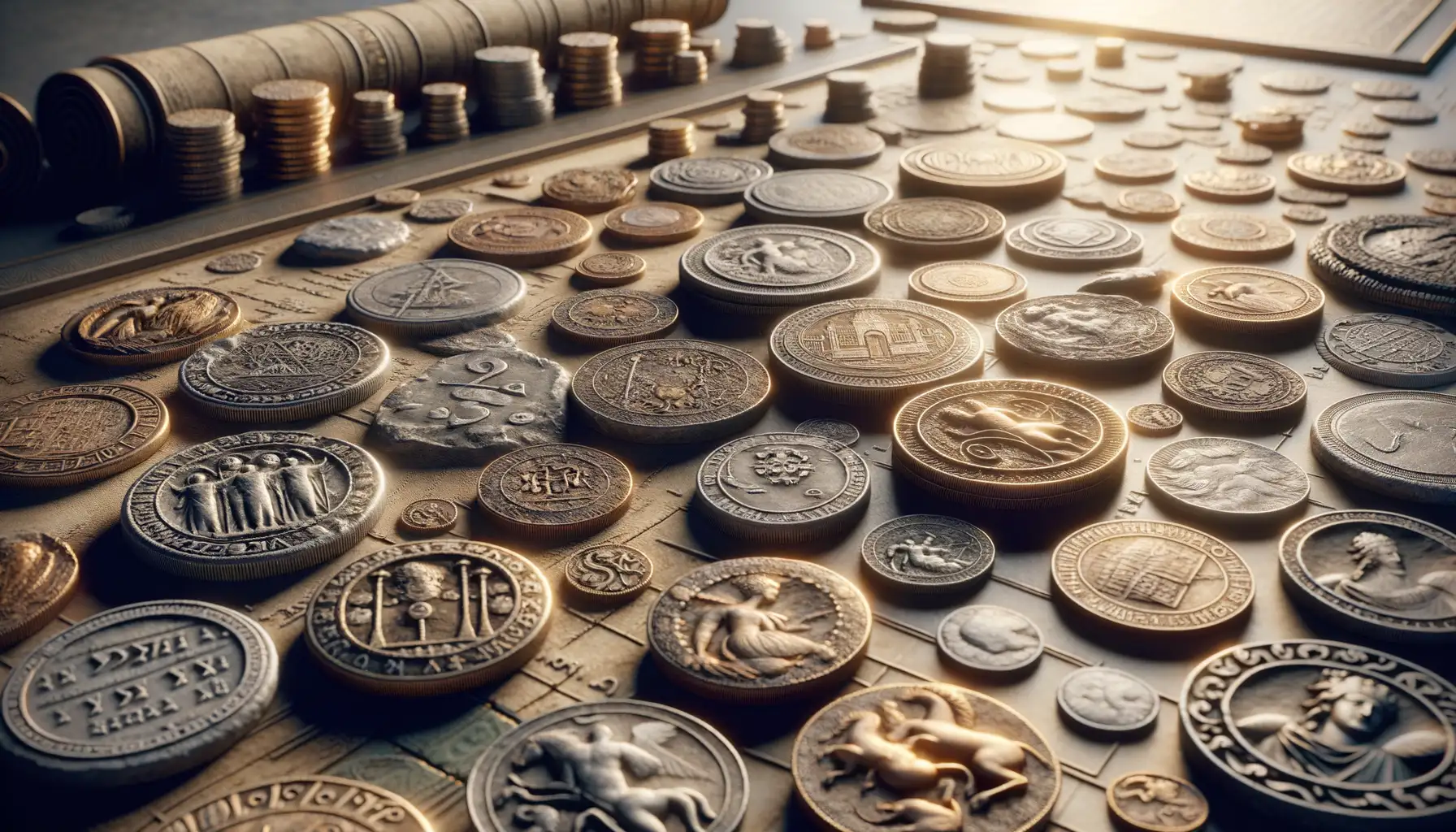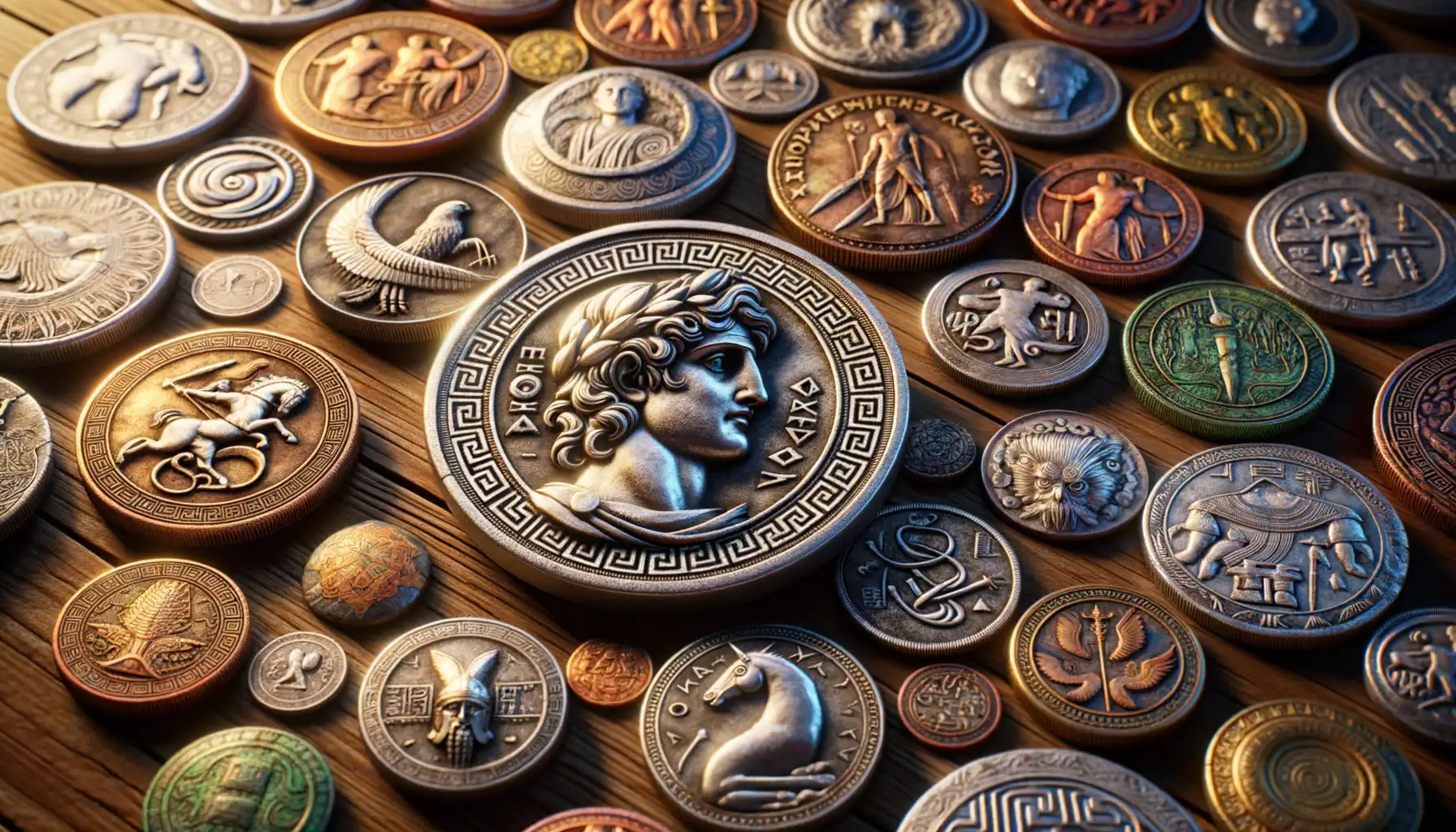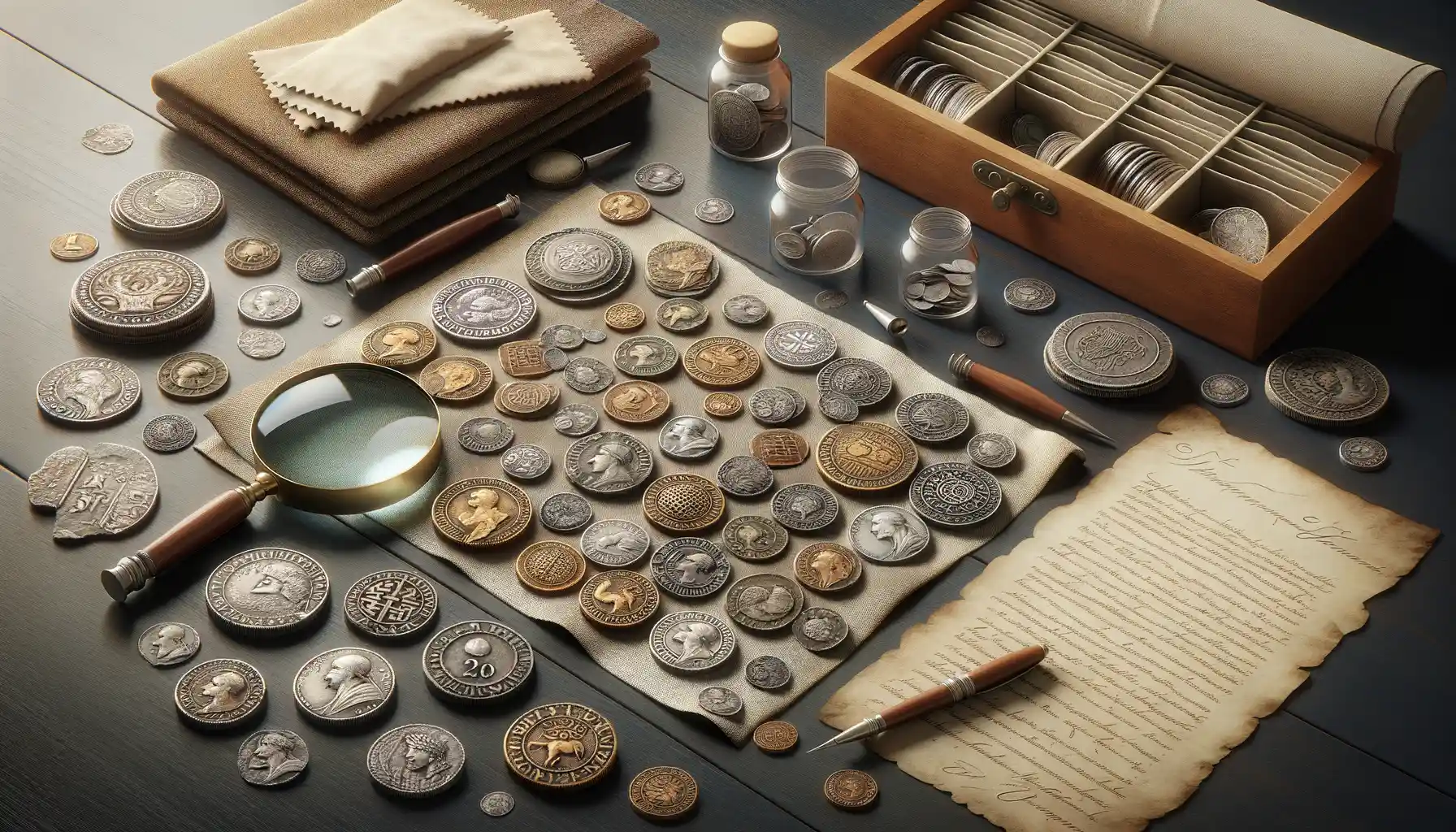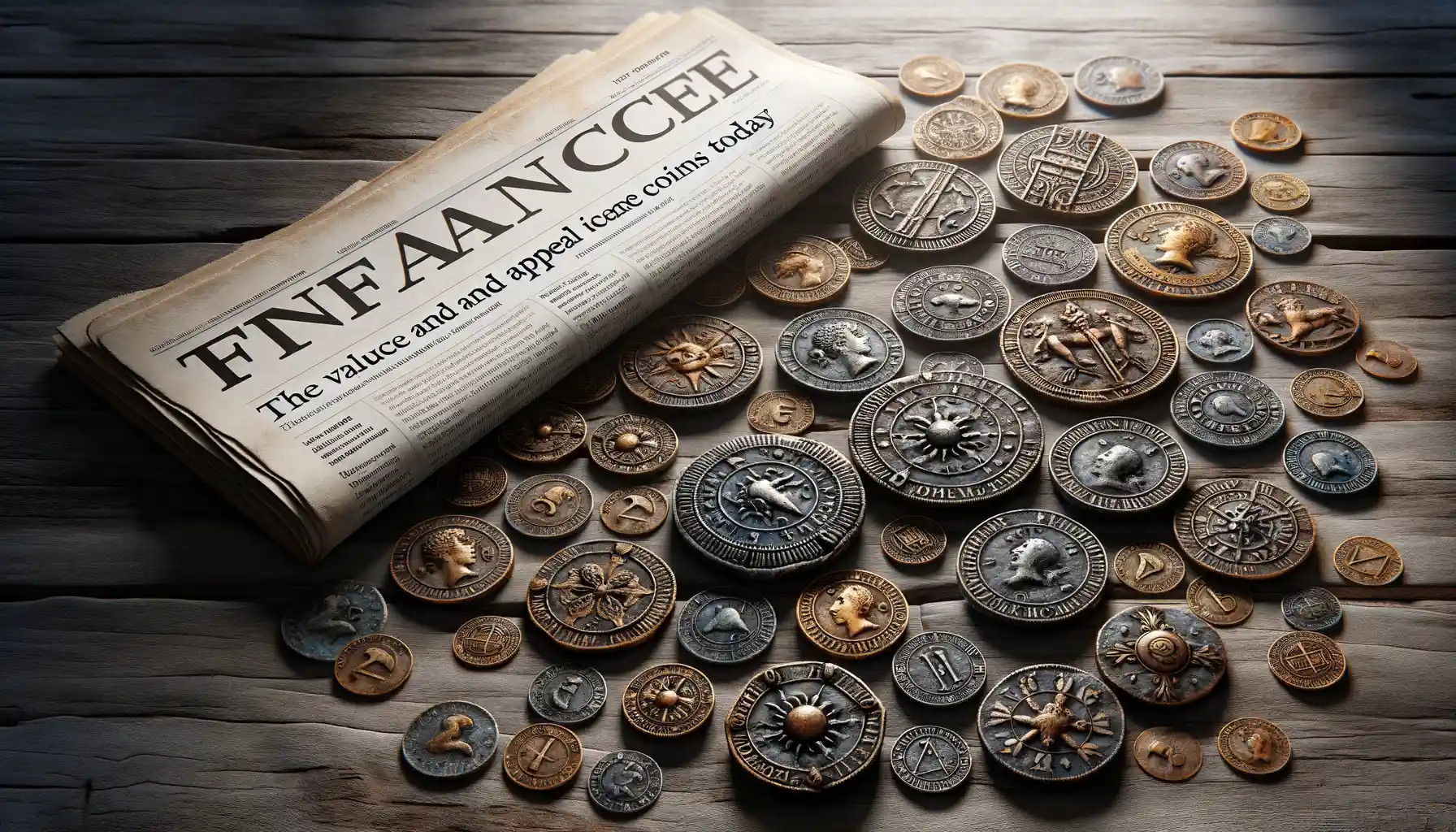Introduction to Ancient Coins
Step Back in Time Through Ancient Coins
Imagine holding a piece of history right in the palm of your hand. That’s exactly what ancient coins are—a tangible connection to the lives, ambitions, and empires of those who came before us. These tiny, intricate marvels have crossed centuries, traveled across continents, and survived revolutions. Each scratch or mark on them whispers tales of power, trade, and everyday life from a world long gone.
What makes ancient coins so extraordinary? For one, their artistry! Take, for example, the detailed profiles of Roman emperors etched with lifelike precision. Or the delicate floral and geometric patterns on Greek drachmas, which would rival modern designs any day. Even their materials—think gleaming gold, silver, or humble copper—tell a story: Was this coin meant for a king’s treasure or an ordinary merchant’s pocket?
- Error coins: Unique mistakes made during minting add charm and rarity.
- Portrait pieces: Coins featuring rulers or gods radiate authority and symbolism.
- Special inscriptions: Ancient scripts engraved on these coins unlock forgotten languages.
Ancient coins aren’t just collectibles—they’re time capsules waiting to unravel mysteries. Who wouldn’t feel thrilled by that kind of discovery?
History and Origins of Ancient Coins

Uncovering the Origins: Ancient Coins Through Time
Coins aren’t just bits of metal; they’re tiny, tangible windows into the past. The story of ancient coins begins thousands of years ago, long before wallets and vending machines existed. Imagine holding in your hand a piece of metal that passed through bustling markets, royal treasuries, and perhaps even a soldier’s pocket.
The first coins are believed to have originated in the ancient kingdom of Lydia (modern-day Turkey) around 600 BCE. These early marvels were made of a naturally occurring mixture of gold and silver called electrum. It’s incredible to think they were as much about art as they were about economy—decorated with lions, bulls, and mythical creatures, they proclaimed the power and identity of their creators.
- Greek coins shined with divine figures like Athena and Zeus, symbolizing faith and culture.
- Roman coins boasted emperors’ faces, spreading propaganda far and wide.
- Chinese coins, with their square holes, reflected practicality and spiritual balance.
Each coin tells a story. They’re not just relics—they whisper secrets of ancient trade routes, political shifts, and even everyday life. From barter systems to mighty empires, coins stand as the storytellers of humanity’s journey.
Popular Types of Ancient Coins

Coins from Powerful Empires
Imagine holding a piece of ancient power in your hand—a coin that once circulated through the bustling marketplaces of mighty empires. Some of the most sought-after ancient coins come from civilizations that shaped history. For instance, the silver drachms of the Achaemenid Empire, featuring the detailed image of a Persian king with a bow, exude an air of royal authority. Meanwhile, Roman denarii tell tales of emperors—from Julius Caesar to Marcus Aurelius—each coin feeling like a snapshot of their reigns.
And we can’t skip the golden splendor of Byzantine solidi. These shimmering beauties, imprinted with Christian imagery, still dazzle collectors centuries later. Coins from these empires are more than money; they’re relics infused with stories of conquests, trade routes, and even propaganda.
Quirky and Unique Ancient Coins
If you thought ancient coins were all about emperors and kings, think again. Some boast designs that are outright whimsical by today’s standards:
- Greek owl tetras with their charming nocturnal bird symbolizing wisdom and Athenian might.
- Indian punch-marked coins, where small symbols like suns, wheels, or animals were stamped freely across irregular shapes.
Each quirky piece feels incredibly human—perfectly imperfect.
Tips for Collecting and Preserving Ancient Coins

Unearthing Treasures: How to Build a Collection That Lasts
Imagine holding a piece of history in your hand—a coin that once jingled in the pocket of a Roman merchant or paid for spices along the Silk Road. Collecting ancient coins isn’t just a hobby; it’s a portal to the past. But where do you begin?
First, start small and focused. Choose a niche that speaks to you—maybe coins from the Byzantine Empire or pieces minted during the reign of Alexander the Great. As you collect, let your curiosity take the lead and research each coin’s story. The more you know, the richer your experience.
And remember: authenticity is key. Always buy from reputable dealers or auctions. Look for certifications or expert evaluations, especially if you’re eyeing rarer finds. It’s far too easy to mistake a reproduction for the real thing.
Caring for Ancient Coins: Your Private Time Capsule
Ancient coins demand gentle care, like fragile relics of times long gone. Avoid cleaning them with anything abrasive—skip the soap and water! Instead:
- Store them in soft, non-reactive holders, such as PVC-free coin flips or velvet-lined trays.
- Keep them away from direct sunlight and humidity to protect their delicate patina—the natural sheen of age that collectors prize.
Lastly, handle your coins sparingly and always by their edges. Each one deserves the reverence you’d give a work of art. Let preservation guide your passion!
The Value and Appeal of Ancient Coins Today

Why Ancient Coins Spark Passion and Curiosity
Imagine holding a piece of history in the palm of your hand—a tangible connection to stories long past. That’s exactly what ancient coins offer. They’re more than just metal; they’re windows into the lives of emperors, merchants, and soldiers who lived centuries ago. From the intricate designs of the Greek drachma to the sturdy Roman denarii, each coin whispers mysteries waiting to be uncovered.
What makes these relics so incredibly appealing? It might be their dual nature: part treasure, part storyteller. For instance, a bronze coin minted under Alexander the Great does more than glimmer—it tells tales of conquest, ambition, and a world reshaped. A single ancient coin can transform an abstract historical event into something deeply personal and full of life.
- Aesthetic allure: The craftsmanship of ancient coins is breathtaking—tiny works of art etched with gods, leaders, and legends.
- Immense rarity: Holding a unique coin feels like possessing a key to the past, one that no museum or textbook could replicate.
The Emotional and Monetary Rewards
Collectors often marvel that ancient coins deliver both heart and heft. On one hand, they’re emotionally priceless, offering a deep sense of connection to bygone eras. On the other hand, many hold significant monetary value—some fetching tens of thousands at auctions. Imagine owning a coin handled by Julius Caesar himself. That’s not just a collectible; it’s a piece of eternity.
But here’s the magic: you don’t need to be an expert or millionaire to begin. Whether it’s a modest Byzantine bronze or a glittering Roman aureus, each acquisition feels intensely personal, like discovering a hidden chapter of history written just for you.